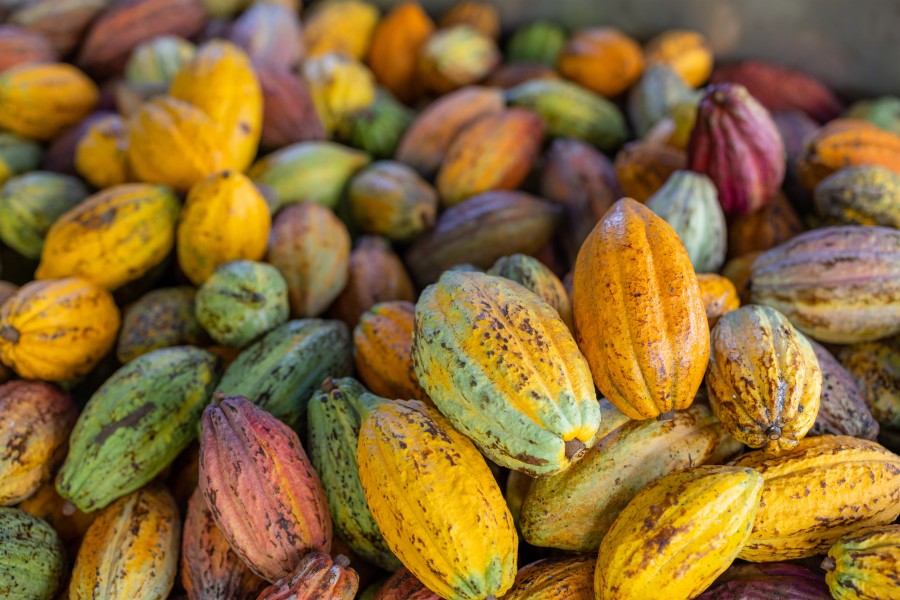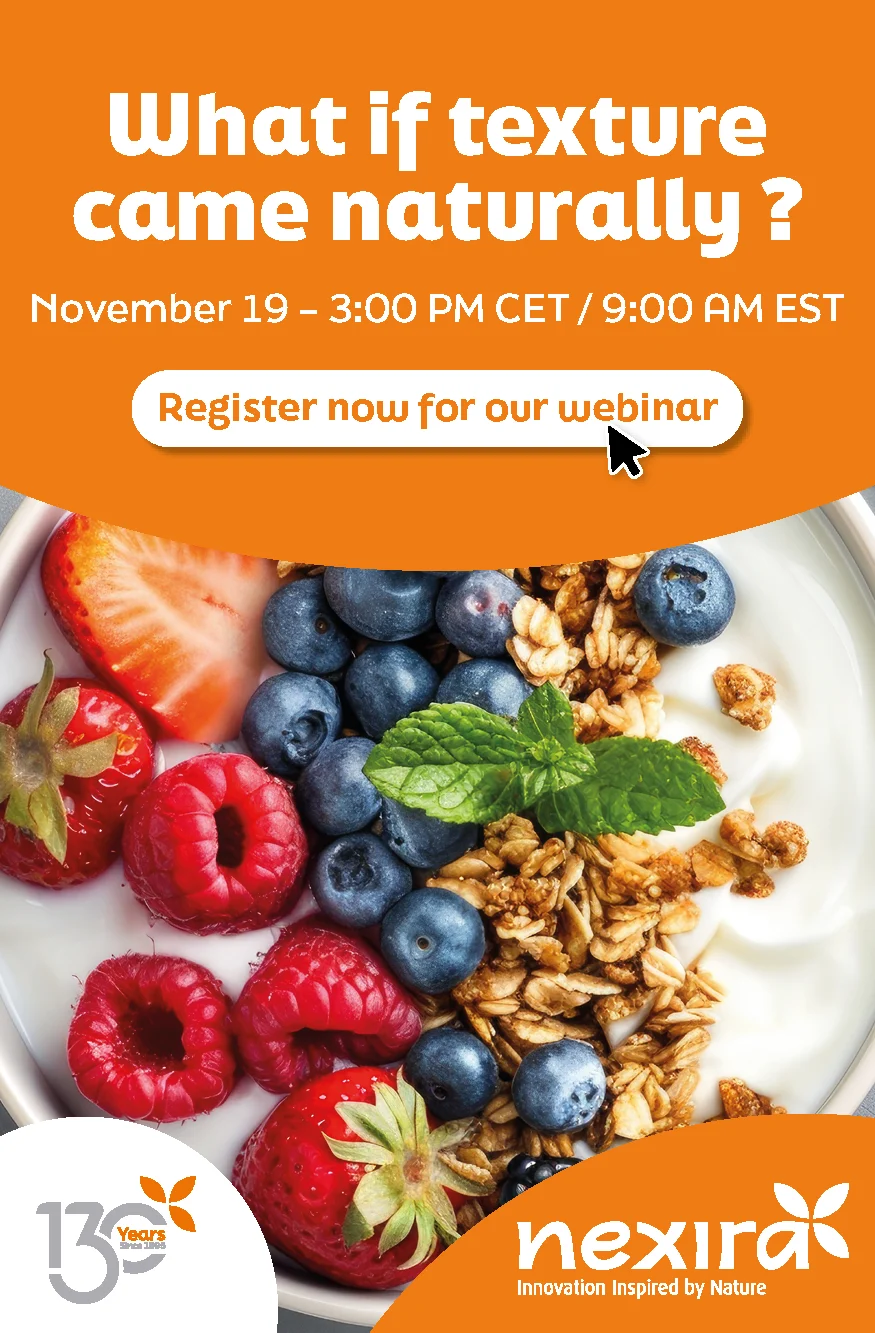Flavor trends: Advancing AI, focusing on functionality & enhancing taste profiles
Key takeaways
- Consumers increasingly associate specific flavors with functional health benefits. Brands are responding by creating multifunctional, health-supportive flavors.
- Flavor houses integrate AI and data analytics to accelerate flavor development, enhance quality control, and predict optimal formulations.
- Rising ingredient costs and shortages are pushing flavor companies to create sustainable, cost-effective alternatives that preserve authentic taste.
Sustainability, personalization, health-conscious consumption, and plant-based alternatives are among the key trends shaping the flavors space, as F&B innovators create new flavor profiles that offer functional benefits and complex yet authentic tastes.
Experimental consumers are seeking adventurous new tastes across various applications. They want flavors that go beyond just sensory components. This need is pushing flavor firms to develop multifunctional solutions that address technical, emotional, ecological, and health needs.
Synergy Flavors and Silesia examine the latest consumer trends and market dynamics that are advancing new ideas and fostering creativity in the flavor landscape. The leading flavor firms consider the extent to which flavors are being designed not just for taste, but also for experiential or emotional impact, such as comfort/nostalgia, global exotic tastes, mood, or functional associations.
Identifying functional benefits
Tom Cleghorn, European category development manager at Synergy Flavors, cites recent company research that identified nine key functional benefits that consumers seek from beverages — energy, gut health, immunity, high-protein, brain health, skin health, hydration, female nutrition, and healthy aging — and, in each, many consumers associate specific flavors with certain functional benefits.

“We compared this data to the current market offering to understand how many functional beverages currently on the market feature these flavors, which identified several innovation opportunities. For example, 53% of consumers we surveyed claimed that they would be interested in seeing citrus flavors in beverages that claim to support immunity, and 30% of consumers were interested in seeing spices such as ginger in these beverages,” he says.
“This is likely due to the perceived links between these ingredients and immunity. Citrus fruits are high in vitamin C, which supports healthy immune system function, while ginger also has proven antibacterial and anti-inflammatory properties, which consumers believe can stave off illness.”
“This highlights a clear opportunity for manufacturers who want to innovate in this space. For example, a lemon and ginger flavored beverage that claims to support immune function would likely appeal to consumers.”
Functionality is also gaining importance at Silesia, which is developing functional flavors that support sugar reduction, mask off-notes from health-promoting ingredients, and enhance overall product performance. These innovations help bridge the gap between indulgence and nutrition.
“Sustainability remains a core driver of innovation. We are committed to creating sustainable flavor solutions that contribute to carbon footprint reduction and help prevent deforestation, for example, through responsible sourcing and the use of renewable raw materials,” Victoria Mesch, communication manager at Silesia, tells us.
“To stay ahead, we continue to invest in digitalization, automation, and cross-functional expertise, ensuring that our flavors are not only technically advanced but also emotionally engaging and globally relevant. Our innovation strategy is designed to be agile and future-ready — capable of responding to evolving consumer needs and environmental challenges.”
Rising costs of raw materials
Silesia sees strong growth in plant-based foods, functional snacks, and globally inspired savory formats. Consumers are seeking authenticity, intensity, and clean label solutions.
 Consumers are interested in citrus flavors and spices like ginger in beverages that claim to support immunity and wellness.At the same time, rising raw material costs and supply shortages — particularly in cocoa and certain spices — are prompting manufacturers to reformulate their products. A growing number of F&B companies are innovating cocoa alternatives to mitigate the rising costs of cocoa, which reached record highs in 2024 and early 2025. This was due to significant production declines in cocoa-producing countries such as Côte d’Ivoire and Ghana.
Consumers are interested in citrus flavors and spices like ginger in beverages that claim to support immunity and wellness.At the same time, rising raw material costs and supply shortages — particularly in cocoa and certain spices — are prompting manufacturers to reformulate their products. A growing number of F&B companies are innovating cocoa alternatives to mitigate the rising costs of cocoa, which reached record highs in 2024 and early 2025. This was due to significant production declines in cocoa-producing countries such as Côte d’Ivoire and Ghana.
Reducing reliance on cocoa as a raw ingredient is driving Silesia’s flavor innovation forward.
“In this context, Silesia’s flavor solutions play a crucial role: premium spice and cocoa-inspired flavors can help bridge the sensory gap left by reduced value-determining ingredients, offering consistent, bold taste while supporting cost-efficiency and supply chain resilience,” Mesch continues.
“This approach not only maintains the desired flavor profile, but also aligns with the growing demand for sustainable and transparent ingredient sourcing.”
At the same time, Silesia anticipates a rise in the trend toward regional flavor portfolios, designed to resonate with local tastes and cultural character. In contrast, consumer individualization will play a key role, with flavors increasingly designed to reflect personal lifestyles, dietary choices, and emotional connections.
For Synergy, the strongest growth category is currently in the no- and low-alcoholic beverages sector, as some consumer segments are turning away from alcohol as part of a holistic approach to health and wellness.
“The ‘mindful drinking’ or ‘sober-curious’ movement is emerging, where awareness of the impact of alcohol means consumers are increasingly seeking out the perceived health benefits of clean label beverage options.”
“As consumers adopt low- and no-alcohol lifestyles, there is increased demand for more premium, or simply more ‘grown-up,’ alcohol alternatives. The association of mouthfeel and after-feel sensations, such as a classic ‘burning’ or ‘tingling’ can be recreated by sensation modulators that are declarable on pack as ‘natural flavoring,’ providing consumers with an authentic experience without alcohol.”
Advancing AI
Another key trend in formulating flavors is the leveraging of emerging technologies, such as AI-driven flavor development, precision fermentation of flavor molecules, and microencapsulation.
Silesia leverages a broad spectrum of emerging technologies to drive flavor development and quality assurance. Its automated dosing system marks a significant milestone, enabling precision, scalability, and responsiveness in flavor production, explains Mesch.
“Beyond this, we actively explore and implement advanced encapsulation and targeted release technologies to ensure flavor stability and integrity. These are already operational and contribute to the robustness of our formulations.” Rising raw material costs and supply shortages — particularly in cocoa and certain spices — are prompting manufacturers to reformulate their products.
Rising raw material costs and supply shortages — particularly in cocoa and certain spices — are prompting manufacturers to reformulate their products.
“In addition, we apply big data handling in production processes and flavor recipe management, allowing us to optimize formulations and respond dynamically to market and sensory data. Our use of state-of-the-art flavor analytics, including isotope analysis, supports the assessment of natural ingredient authenticity and quality.”
“We also employ experimental design methodologies to optimize flavoring preparations, ensuring efficiency and reproducibility. These initiatives form a solid foundation for future AI-supported flavor development, precision fermentation of flavor molecules, and other cutting-edge approaches. While some technologies are already mature and in use, others are in advanced exploratory phases, positioning us at the forefront of innovation in the flavor industry.”
Combining machine learning with flavorist expertise
Symrise recently announced a new addition to its foresight platform Symvision AI. In addition to identifying new market opportunities, it now also features a powerful suite of AI-assisted tools for formula prediction. This accelerates the creation of taste in F&B development.
The company says that these advanced AI capabilities empower flavorists to predict optimal formulations and their sensory performance with high precision. Specifically, they support products low in sugar or sodium while also addressing the growing demand for healthier options with great taste.
“We combine the profound expertise of our specifically trained flavorists with machine learning,” says Gerhard Krammer, SVP research & technology at Symrise Food & Beverage. “This approach shortens development cycles and unlocks exciting possibilities in taste creation. We support our customers in meeting evolving consumer demands with speed and confidence.”
“By combining deep flavorist expertise with machine learning, Symrise empowers its customers to lead in a dynamic market where creativity, precision, and speed are essential, thereby accelerating customers’ innovation advantage.”












